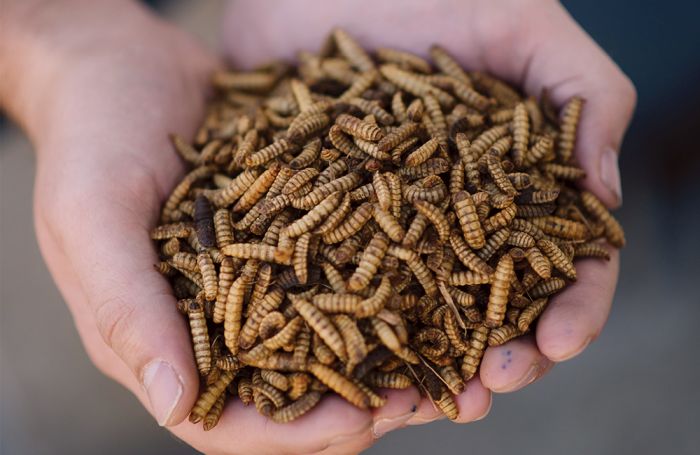The pet food market, especially in developed regions, owes its ongoing growth in large part to
premiumization, or consumers buying higher-priced pet foods sporting label claims such as natural, grain-free and high meat or protein, said Jared Koerten, head of pet care for
Euromonitor International. These products traditionally have been sold exclusively in the pet specialty channel, but their expansion into mass market outlets, often at lower prices, is changing premiumization’s effect on pet food.
Yet premiumization is evolving, Koerten believes. During the American Feed Industry Association’s 12th Annual Pet Food Conference, held February 12 in conjunction with the International Production and Processing Expo in Atlanta, Georgia, USA, he presented three new frontiers that pet food brands may want to pursue to continue to grow and succeed: ethics, sourcing and sustainability; value for money; and customization and personalization.
Pet food premiumization history, short-term prospects
Euromonitor has identified premiumization as a global “megatrend” for nearly all consumer products, Koerten said, and it definitely applies to pet food. From 2013 to 2018, the average global price of pet food increased 18.5 percent, to nearly U.S.$3.50 per pound.
Yet overall pet food growth is slowing in developed markets, partly due to “
mass premiumization.” For human food, one of the new frontiers of innovation is organic, which has experienced 8.2 percent compound annual growth (CAGR) since 2013, but pet food has not kept pace, according to Koerten. Instead, much of the short-term innovation in pet food seems to be coming from new formats and processing technologies like cold-pressed, air-dried, freeze-dried, oven baked and frozen. He also named humanized formats such as filets, purees and soups/broths.
The three frontiers for pet food premiumization that Koerten presented look out 20 to 30 years.
1. Ethics, sourcing and sustainability
Though Euromonitor does not track ethical label claims on pet food, its data for human foods show increasing sales for claims related to sustainable sourcing, animal welfare, clean label, religious labels and sustainable packaging. Globally, nearly 65 percent of consumers say they try to have a positive impact on the environment through everyday actions, he said.
For pet food, this could manifest through sustainable proteins, recyclable packaging and even food miles (local sourcing of foods and ingredients), Koerten suggested. Traditionally, pet food was very sustainable in that it used by-products from the human protein stream. Now, with humanization and demand for “human grade” meats, a conflict has arisen. So, the industry is and should be looking at alternative proteins, Koerten said, including insects, vegan options and MSC-certified fish proteins.
Some companies are also already investing more heavily in recyclable pet food packaging. Mars Petcare just began a recycling program with TerraCycle, he said, while Nestle is launching a packaging research institute.
2. Value for money in pet food
As middle classes continue to grow in emerging markets, they will also continue to become pet owners or trade up from table scraps to commercial pet food, or from economy brands to mid-priced ones, Koerten said. He described Asia as ground zero for this growth, presenting data showing rising CAGRs through 2023 for mid-priced and premium pet food categories in Asia and falling CAGRs for economy-priced. (Earlier in his presentation, he identified
Asia as a new pet food frontier on its own because of its robust growth.)
The key, Koerten explained, is that these newer pet owners can find value for their money, and that concept definitely appeals to people in developed markets, too. “People globally like finding bargains,” he said, pointing out the success of “off price” retail outlets in North America like Nordstrom Rack, TJ Maxx and Aldi, plus Lidl in Europe.
With pet food, this is happening with premium private label, which is growing more than twice as fast as premium branded products, according to Koerten: from 2013 to 2018, sales of premium private label pet foods had a 14.5 percent CAGR, compared to 6.5 percent for premium branded products. Part of the mass premiumization effect, this is reshaping the pet food market in the U.S., pushing traditional mass brands to go more natural and premium with their legacy brands.
3. Pet food customization and personalization
Koerten described a progression of pet food, from specific formulas – life stage, small breed or breed specific, condition specific – to therapeutic diets sold through the veterinary channel. The next step in the evolution appears to be formulas customized for individual pets, many offered online. It’s a small but growing category, he said, especially among millennials and younger consumers. As it continues to grow and price points come down, the category will likely be even more attractive to younger pet owners, Koerten said.
Even brick-and-mortar retailers are bringing in customization, he added: Petco now has JustFoodforDogs exhibition kitchens in some of its stores, and in Finland, a pet retail chain called Musti ja Mirri developed a loyalty program for dogs themselves – not their owners. A dog enrolled in the program wears a smart collar that is recognized as soon as the dog walks in a store, where staff greet the dog personally, give it a personalized treat and shower it with attention. This is one of the next frontiers.

